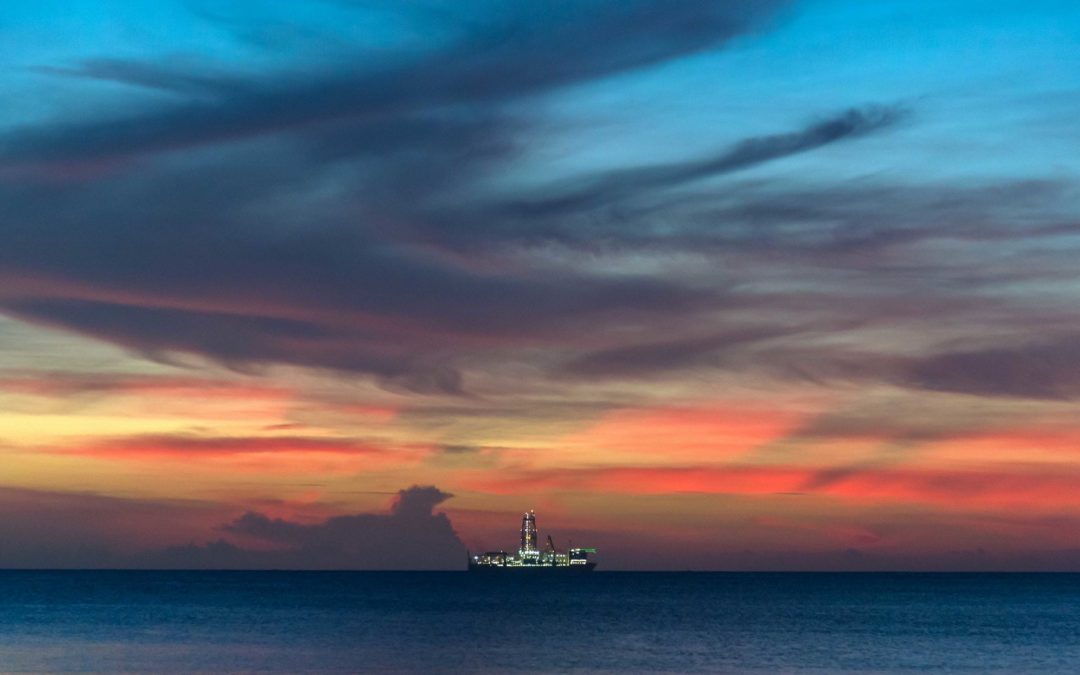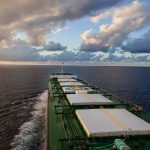Carbon dioxide transportation is shifting to the seas as emitters look to move captured gas to offshore storage projects, according to Rystad Energy.
A fleet of 55 carriers will be required by 2030 to ship more than 90 million tonnes per year of CO2, along with 48 terminals to handle the import and export of the gas, the Norway-based consultancy said in a report on Monday.
“Carbon dioxide shipping is a nascent market now, but it’s set to play a significant role in the global climate solution in the coming years. However, questions remain about the environmental impact of the process,” said Lein Mann Bergsmark, vice president of supply chain research at Rystad Energy.
“In an ideal world, CO2 tankers would use renewable fuels with no associated emissions. However, these fuels are too expensive now to be economically viable.”
Capture, utilisation and storage (CCUS) involves the trapping of carbon dioxide emissions from industrial activities such as steel and cement production, as well as from fossil fuel combustion in power generation.
Subsequently, the captured carbon is transported either by ship or through pipelines and securely stored in subterranean geological formations.
Global CCUS uptake needs to expand 120 times from current levels by 2050, rising to at least 4.2 gigatonnes a year of carbon dioxide captured, for countries to achieve their net-zero commitments, according to McKinsey.
Onshore pipelines are the most common mode currently, with 330 expected to be operational by 2030, Rystad said.
“Offshore pipelines are larger, transport captured carbon to underwater storage sites and are expected to play a vital role in the supply chain in the coming years,” the consultancy said.
“CO2 shipping is the third piece of the puzzle and the most flexible solution for carrying carbon emissions over long distances at a relatively low cost.”
However, the shipping industry’s use of emissions-heavy conventional fuels has raised environmental concerns.
Based on Rystad’s 2030 estimates, ships travelling long distances could emit as much as 5 per cent of the total CO2 shipped.
Switching to liquefied natural gas could cut emissions by 18 per cent, while blue methanol would result in a 20 per cent drop, the consultancy said.
Blue ammonia could reduce shipping emissions by up to 80 per cent, it added.
The North Sea is set to take “centre stage” in the CO2 shipping surge due to its proximity to major populated areas in Northern Europe, Rystad said.
Norway may account for 30 per cent of global shipped CO2 by 2030 with 26 million tonnes per year, but this depends on the speed of storage site development, the consultancy said.
The Netherlands is expected to follow Norway, with 23 million tonnes per annum, and the UK, with about 20 million tonnes per annum of forecast shipping volumes.
France is projected to ship 17 million tonnes per annum of CO2 in 2030, followed by Belgium at 13 million tonnes per annum.
“These countries do not have ample opportunities to store their CO2 emissions domestically, so the chance to ship carbon dioxide to neighbouring European countries will help fast-track CCUS developments,” Rystad said.
Australia is also set to be a “significant” player in the global market, shipping and storing CO2 from domestic projects and neighbouring Asia-Pacific countries, including Japan, the consultancy said.
“The myriad challenges and uncertainties, including high costs, across the CCUS value chain often dissuade plant owners from exploring carbon capture opportunities,” Rystad said.
“Fortunately, emerging initiatives, including the development of open-source CO2 storage infrastructure and the expansion and diversification of transportation networks, should ease some of these restraints and reduce the complexity of projects.”
Source: Hellenic Shipping News





